
Fashion Theory-The Journal of Dress Body & Culture
Scope & Guideline
Decoding the Language of Fashion and Identity
Introduction
Aims and Scopes
- Interdisciplinary Research on Fashion:
The journal encourages contributions from various fields such as sociology, anthropology, cultural studies, and art history, fostering a rich dialogue around the implications of dress and fashion. - Cultural Identity and Representation:
A core focus lies in examining how fashion serves as a medium for expressing cultural identities, including the politics of representation and the intersectionality of race, gender, and sexuality. - Sustainability and Ethical Fashion:
There is a significant emphasis on sustainability in fashion, analyzing the ethical dimensions of production, consumption, and the impact of fashion on the environment. - Fashion as a Political Tool:
The journal explores how fashion functions as a means of political expression and activism, addressing issues such as gender politics, social movements, and historical contexts. - Historical and Contemporary Fashion Studies:
It encompasses both historical and contemporary perspectives, inviting discussions on the evolution of fashion and its relevance in modern society. - Digital and Global Fashion Cultures:
The journal recognizes the influence of digital platforms on fashion dissemination and consumption, as well as the transnational flows of fashion practices and discourses.
Trending and Emerging
- Sustainable and Ethical Fashion Practices:
There is a growing emphasis on sustainability and ethical practices within fashion, reflecting broader societal concerns about environmental impact and social responsibility. - Digital Fashion and Technology:
Emerging themes around digital fashion, including virtual fashion and the impact of social media influencers, highlight the changing landscape of fashion communication and consumption. - Intersectionality and Fashion Activism:
An increasing focus on intersectionality—examining how various identities intersect within fashion—suggests a trend towards more inclusive and activist-oriented discussions. - Fashion and Mental Health:
Explorations of the relationship between fashion, self-identity, and mental health are gaining traction, indicating a recognition of the psychological dimensions of dress. - Cultural Appropriation and Transnational Fashion:
Discussions around cultural appropriation and the complexities of transnational fashion practices are becoming more prevalent, reflecting ongoing debates about cultural exchange and ethics.
Declining or Waning
- Traditional Fashion Histories:
There has been a noticeable shift away from purely traditional historical analyses toward more contemporary and interdisciplinary approaches that incorporate broader social and cultural narratives. - Commercial Fashion Analysis:
The focus on commercial aspects of fashion, such as marketing strategies and retail practices, seems to be waning as more attention is given to critical and ethical dimensions of fashion. - Static Gender Roles in Fashion:
Discussions surrounding fixed notions of gender in fashion are declining as the journal increasingly embraces fluid and diverse representations of gender in relation to dress. - Regional Fashion Studies:
While regional studies have been important, there is a trend toward more global analyses that consider transnational influences rather than isolated regional perspectives. - Celebrity Culture in Fashion:
The exploration of celebrity influence on fashion is becoming less frequent as the journal shifts focus towards more complex narratives surrounding identity and culture.
Similar Journals
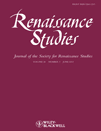
Renaissance Studies
Bridging History and Modernity through Renaissance StudiesRenaissance Studies, published by Wiley, stands as a vital academic platform within the disciplines of Cultural Studies, History, Literature and Literary Theory, Religious Studies, and Visual Arts and Performing Arts. With an impressive history of publication spanning from 1987 to 2024, this journal is recognized in 2023 metrics as a Q2 journal in four categories and Q1 in Literature and Literary Theory, reflecting its substantial impact in promoting interdisciplinary dialogue and research. The journal's robust Scopus rankings further underscore its relevance, including a position in the 83rd percentile in Literature and Literary Theory. Although not an open-access journal, it provides readers and contributors with access to curated, high-quality scholarship that explores the complexities of the Renaissance and its enduring influence on contemporary thought and culture. Researchers, professionals, and students alike will find Renaissance Studies invaluable in fostering discussions that bridge historical context with modern inquiry.
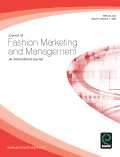
Journal of Fashion Marketing and Management
Innovating the Future of Fashion Marketing ResearchJournal of Fashion Marketing and Management, published by EMERALD GROUP PUBLISHING LTD, stands at the forefront of academic inquiry within the fashion marketing and management domain. With its commitment to excellence, this esteemed journal maintains a robust Q1 ranking in Business and International Management and a Q2 ranking in Marketing for 2023, reflecting its high impact and relevance in the field. The journal serves as a vital resource for researchers, professionals, and students interested in the evolving dynamics of fashion marketing, consumer behavior, and strategic management practices. Offering critical insights and innovative research, it aims to bridge theoretical frameworks with practical applications, thereby enhancing the understanding of marketing phenomena in the fashion industry. The ISSN for the print version is 1361-2026 and for the electronic version 1758-7433. The journal operates without open access, allowing for a selective dissemination of quality scholarly work, thus solidifying its reputation as a leading publication in the United Kingdom's vibrant academic landscape.

Journal of Consumer Sciences
Innovating insights for a changing consumer landscape.Journal of Consumer Sciences is a pivotal publication in the field of consumer science, dedicated to advancing knowledge and understanding within this dynamic and interdisciplinary area. Published by the SOUTH AFRICAN ASSOCIATION FOR FAMILY ECOLOGY & CONSUMER SCIENCES (SAAFECS), this journal serves as a platform for researchers, professionals, and students seeking to explore contemporary issues and innovations affecting consumer behavior, family ecology, and sustainable consumption practices. Although specific metrics such as the impact factor and H-index are currently unavailable, the journal's commitment to open access and the dissemination of high-quality research positions it as a key resource for scholars seeking to make meaningful contributions in this rapidly evolving discipline. Based in Stellenbosch, South Africa, the journal encompasses a broad range of topics and aims to bridge theoretical frameworks with practical applications, making it an essential read for anyone engaged in consumer sciences.
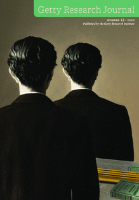
Getty Research Journal
Fostering Innovation in Art and CultureGetty Research Journal, published by University of Chicago Press, is an influential periodical in the fields of Conservation, History, Museology, and Visual Arts and Performing Arts. Established in the United States, this journal aims to foster scholarly discourse and advance research in the visual arts and cultural heritage, making it a vital resource for researchers, professionals, and students alike. While it holds a Q4 ranking across multiple disciplines in the 2023 category quartiles, indicating opportunities for growth and engagement, its unique focus on the interplay between art, history, and conservation provides a distinct platform for innovative ideas. The journal encompasses a diverse range of topics, encouraging interdisciplinary research that underscores the importance of the arts in society. As it converges years from 2015 to 2024, the Getty Research Journal serves not just as a publication, but as a dynamic forum for critical thought and exploration in the expansive realm of art and culture.

Arts
Fostering Dialogue Across Diverse Artistic DisciplinesArts, published by MDPI, is an esteemed open-access journal dedicated to the interdisciplinary field of arts, encompassing visual arts, performance, literature, and related studies. Since its inception in 2012, Arts has provided a platform for researchers and practitioners to disseminate innovative ideas and critical research that enrich our understanding of cultural expressions and artistic practices. With its E-ISSN 2076-0752, the journal ensures wide accessibility and dissemination of knowledge, facilitating an inclusive dialogue among artists, scholars, and students from diverse backgrounds. The journal's commitment to quality and relevance in the humanities is reflected in its robust editorial standards and peer-review process, making it a valuable resource for those engaged in artistic research. Arts serves as an essential space for academics to explore contemporary challenges and advancements in the arts, highlighting its integral role in societal discourse and cultural development.
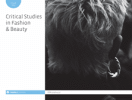
Critical Studies in Fashion & Beauty
Engaging Scholars in the Critical Study of Aesthetic TrendsCritical Studies in Fashion & Beauty is a pivotal academic journal published by INTELLECT LTD, dedicated to exploring the vibrant intersections of fashion, beauty, and cultural studies. Based in the United Kingdom, this journal is notable for its influential role in the Arts and Humanities, particularly within the categories of Visual Arts and Performing Arts. With an impressive ranking in the 2023 Scopus categories—achieving Q1 status in Visual Arts and Performing Arts and Q2 in Arts and Humanities (miscellaneous)—this journal serves as a vital platform for innovative research, critical discourse, and theoretical examination of contemporary issues in the realms of aesthetics and culture. Its contributions are essential for scholars, practitioners, and students who seek to deepen their understanding of the socio-cultural dimensions of fashion and beauty. The journal, which has been publishing since 2019, is poised to influence the field significantly through its commitment to rigorous academic inquiry and interdisciplinary approaches.
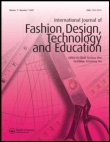
International Journal of Fashion Design Technology and Education
Empowering Fashion Education with Cutting-Edge InsightsThe International Journal of Fashion Design Technology and Education, published by Taylor & Francis Ltd, stands at the forefront of research in the dynamic fields of fashion design, technology, and education. Since its inception in 2008, the journal has provided a vital platform for researchers, educators, and practitioners to share innovative findings, pedagogical strategies, and technological advancements within the fashion industry. With an impressive impact factor and categorizations in the Q1 and Q2 quartiles across multiple disciplines—including Visual Arts, Education, and Industrial Engineering—this journal not only offers insightful contributions to academia but also informs practical applications in the ever-evolving fashion landscape. Although currently non-open access, the journal remains accessible to a wide range of audiences, facilitating a deeper engagement with contemporary issues in fashion technology and education. As the journal converges its themes through to 2024, it continues to encourage submissions that push the boundaries of knowledge and creativity, making it an essential resource for anyone invested in the future of fashion.
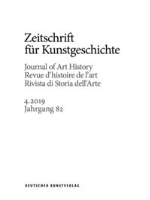
ZEITSCHRIFT FUR KUNSTGESCHICHTE
Unveiling the Rich Tapestry of Artistic HeritageZEITSCHRIFT FUR KUNSTGESCHICHTE is a prestigious journal dedicated to the study of art history, offering insightful analyses and discussions that enrich the understanding of visual arts and performing arts. Published by DEUTSCHER KUNSTVERLAG GMBH in Germany, this journal has established itself as a significant platform for researchers and professionals alike since its inception. With a print ISSN of 0044-2992 and an e-ISSN of 2569-1619, it spans a comprehensive range of topics in art history, reflecting both traditional and contemporary perspectives. Although categorized in the Q4 quartile for Visual Arts and Performing Arts, the journal contributes to a rich dialogue within its field, aiming to foster academic discourse and promote scholarly research. Its scope has evolved notably from converged years starting in 1975 and gathering strength from 2001 to 2024, and it is committed to serving as an essential resource for students, academics, and practitioners in the arts. While not offering open access, the journal maintains a rigorous peer-review process to ensure high-quality submissions that advance knowledge and stimulate critical thought.

KOREA JOURNAL
Unlocking New Perspectives in Korean Cultural StudiesKOREA JOURNAL, published by the Academy of Korean Studies, stands as a significant scholarly resource in the fields of Cultural Studies, History, Literature and Literary Theory, and Visual Arts and Performing Arts. With an impressive impact factor highlighted by its Q1 and Q2 quartile rankings across multiple categories, the journal facilitates the dissemination of innovative research that contributes to the understanding of Korean society and culture, offering a platform for both local and international scholars. Open Access since 2020, ensures that its articles are readily available to a wide audience, thereby promoting broader academic engagement. By featuring diverse interdisciplinary studies, the journal aims to bridge gaps across various fields and foster dialogue among researchers, practitioners, and students alike. Located in Seongnam-si, Gyeonggi-do, South Korea, it continues to play an essential role in advancing scholarship related to Korean studies while maintaining academic rigor and quality.
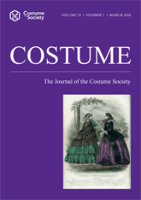
Costume-The Journal of the Costume Society
Unraveling the Cultural Narratives of DressCostume - The Journal of the Costume Society is a premier academic journal published by Edinburgh University Press, dedicated to interdisciplinary research in the field of costume studies, fashion history, and cultural heritage. With an ISSN of 0590-8876 and an E-ISSN of 1749-6306, this journal has been a vital platform for scholars since its inception in 1965, continuing to address contemporary issues surrounding dress and identity up until 2024. Recognized for its contribution to History and categorically positioned in Q2 for this field and Q4 in Business, Management, and Accounting for 2023, Costume garners attention from both historians and fashion theorists alike, evidenced by its Scopus rankings of #714 in Arts and Humanities History and #190 in General Business, Management and Accounting. While it operates under a traditional access model, it remains a crucial resource for those engaged in the exploration of costume, fashion, and their societal impacts. With its rich scholarly discourse, Costume invites researchers, professionals, and students to contribute to and benefit from its extensive range of articles, illuminating the profound narratives that clothing narratives can tell.